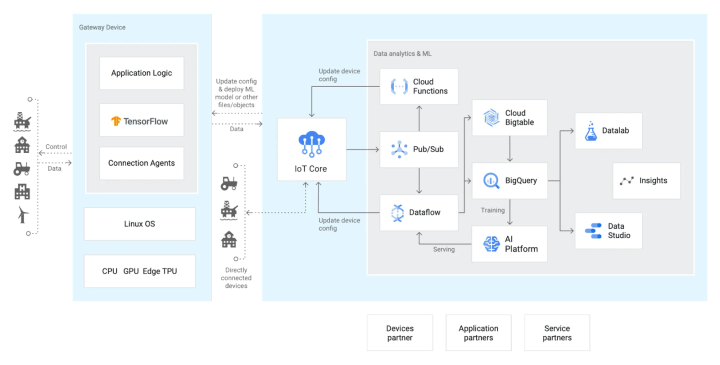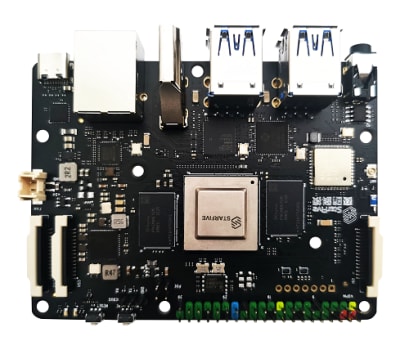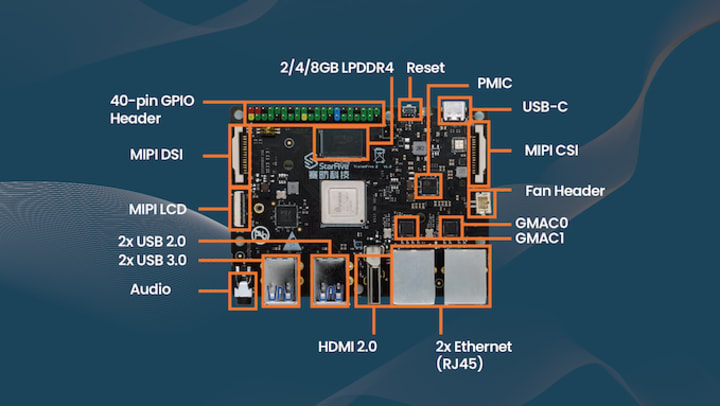The State of IoT – August 2022
Edoardo Barbieri
on 5 September 2022
Tags: Embedded , IoT , stateofiot
Welcome to the August edition of the monthly State of IoT series.
Let’s dive straight into the most prominent news across the IoT landscape from the last month.
Google kills Cloud IoT Core
Google introduced Cloud IoT Core, a fully managed service for securely connecting and managing devices, at the Google I/O conference in May 2017. In September of that year, Google revealed the public availability of the solution to all users in beta.
Cloud IoT Core fell short of its ambition to make enterprise IoT app development easy. This month, Google decided to kill the project.
“Google Cloud IoT Core is being retired on August 16, 2023. Contact your Google Cloud account team for more information”, reads the only public statement on Google Cloud’s web page. According to a Hackernews post, the Google Cloud IoT Core Product Team shared an email to existing users, clarifying their access to the IoT Core Device Manager APIs will no longer be available after August 16, 2023. As of that date, devices will be unable to connect to the Google Cloud IoT Core MQTT and HTTP bridges, and Google Cloud will shut down existing connections.
Google hasn’t been shy about retiring products from the IoT landscape. In 2015, Google introduced Brillo, an IoT OS allegedly capable of running on 32MB RAM at Google I/O. After renaming Brillo to Android Things the following year, Google released the first non-preview version of Android Things 1.0, promising three years of updates for every device. In 2019, Google decided to ‘refocus’ Android Things for OEMs building speakers and displays, giving up on its vision as a general-purpose OS for IoT devices. A couple of years later, Google killed Android Things. It’s not uncommon to see projects come and go in the fast-moving world of IoT. Luckily there are some options for Google Cloud IoT Core users. You can learn more about how to build and deploy a central IoT management solution in our Secure IoT Device Management whitepaper.
Privacy concerns over Amazon’s acquisition of iRobot
iRobot is known for introducing the Roomba, one of the best-selling robot vacuums on Amazon, in 2002. Last month, Amazon and iRobot signed a definitive merger agreement under which Amazon will acquire the makers of the Roomba vacuum.
A team of MIT roboticists co-founded iRobot in 1990 and unveiled their first product, Genghis, a robot designed for space exploration, a year later. After pivoting toward detecting and eliminating mines in surf zones with Ariel, iRobot won the DARPA contract to build a tactical mobile robot in 1998. The contract led to the development of the PackBot and its deployment at the World Trade Center in September 2001. From innovative robots for military and rescue operations, iRobot went through quite a journey to ship what is now one of the most popular household appliances.
iRobot reached product-market fit with the launch of the Roomba floor vacuuming robot in 2002. Since then, iRobot bolstered its product lines with a series of launches, including the Scooba for floor washing, the Dirt Dog for shop sweeping and the Verro pool cleaning robot. To this day, the award-winning Roomba series of vacuum cleaning robots remains their most profitable achievement.

With the latest acquisition, Amazon keeps expanding its home technology portfolio after acquiring video doorbell firm Ring and text-to-speech technology company IVONA Software, key for developing what is now Amazon Alexa.
Amazon’s access to consumer data raised several concerns regarding collecting and processing personal information for the millions of worldwide Roomba users. In response, Colin Angle, iRobot’s CEO and one of the MIT technologists who founded the company more than two decades ago, emphasised protecting customer data and privacy is of the utmost importance for iRobot. In a statement, the CEO reassured its customers that iRobot does not and will not sell their personal information.
Ubuntu runs out-of-the-box on RISC-V boards
In the past decade, open-source software and open standards have reshaped the world of technology and produced long-lasting results. The time is now ripe for Open Hardware to Meet Open Software.
RISC-V is a new paradigm for Open Source hardware, developing a free and open Instruction Set Architecture (ISA). The ISA holds the promise of increasingly rapid processor innovation through open standard collaboration.
Thanks to its availability on a wide range of processors, from low-end microcontrollers to high-end server-grade processors, RISC-V is poised to empower a new era of processor innovation with rapid industry-wide adoption. Combining the best open-source architecture with the best open-source operating system, porting Ubuntu on RISC-V further facilitates the adoption of novel computing architectures.
As part of a vibrant ecosystem driving innovation at the edge, Canonical and its IoT technology partners work together to promote the deployment of high-performance devices. Within a few days, Canonical announced it enabled Ubuntu on Allwinner’s Nezha RISC-V and StarFive’s VisionFive board.
As Ubuntu and open-source software are already accelerating the adoption of IoT innovations, support for the RISC-V ISA reflects Canonical’s commitment to continued investments in open standards and collaboration.
VisionFive 2: a RISC-V alternative to the Pi?
Another great release will please those wishing to see the rise of RISC-V as a dominant ISA alongside x86 and ARM.
Just a few days after Canonical announced it enabled Ubuntu on the VisionFive board, StarFive released its VisionFive 2 single-board computer (SBC).
StarFive made significant strides to feature a wide range of interfaces with powerful performance. The VisionFive 2 is a pioneering board that combines performance with a low-cost, open-source RISC-V SBC. The board is significantly more powerful than its previous iteration, with more than double the performance per watt.
The VisionFive 2 boasts a JH7110 quad-core CPU running at 1.5 GHz, up from 1.0 GHz in the JH7100. Compared to the original VisionFive, it further integrates the Imagination Technologies IMG BXE GPU, supporting OpenGL, OpenCL and Vulkan.
The latest SBC by StarFive drops onboard Wi-Fi and Bluetooth in favour of an M.2 M-key expansion module. Also, the newest version of the VisionFive series adds a 4-lane MIPI DSI display port that supports up to 2K at 30FPS, whereas the HDMI port now supports 4K up to 30FPS.
Priced at $55 for its 2GB model and $85 for the 8GB model, the VisionFive 2 is a great entry into the RISC-V computing ecosystem. RISC-V isn’t at Raspberry Pi prices yet, but it’s now at parity with non-Pi ARM boards.
By releasing its second generation of the first cost-effective Linux-based RISC-V SBC, StarFive will help usher in a new era of open-source hardware and software computing. The company also launched a Kickstarter campaign to fund the board’s production.
Bosch to build digital twin of manufacturing plant
Bosch aims to create a digital twin of the machinery and process flow at one of its plants in Madrid. To accelerate the digitisation of its industrial facilities and work on the simulation, Bosch is partnering with Multiverse Computing.
Open collaboration to further industrial automation is not new. Just last month, Siemens and NVIDIA revealed their joint work on advancing digital twins for manufacturing. By connecting the NVIDIA Omniverse and the Siemens Xcelerator ecosystem, the two companies aim to expand the use of digital twin technologies to bring a new level of speed and efficiency to solve design, production and operational challenges.
The partnership will help manufacturers respond to customer demands, reduce downtime and adapt to supply chain uncertainties while achieving sustainability and production targets.

The announcement is interesting because Multiverse Computing will work with Bosch on creating a quantum computing model for Madrid’s manufacturing facility. Multiverse Computing works on developing quantum-inspired algorithms deployed on supercomputers and quantum hardware.
Bosch aims to enhance quality control and production efficiencies by bringing quantum computing into Madrid’s manufacturing facility. Whereas the industrial pioneer’s current digitisation efforts in 240 plants resulted in 120,000 connected machines and more than 250,000 devices, it remains to be seen whether quantum technologies are mature enough to bring substantive benefits to industrial computing.
Stay tuned for more IoT news
We will soon be back with next month’s summary of IoT news. Meanwhile, join the conversation on IoT Discourse to discuss everything related to IoT and tightly connected, embedded devices.
Further reading
Why is Linux the OS of choice for IoT devices? Find out with the official guide to Linux for embedded applications.
Choosing a distribution for your IoT device: Yocto or Ubuntu Core? Learn about the trade-offs between a community-maintained built system and a commercial-grade distribution in our webinar.
Discover how open standards and interfaces are accelerating the world’s move towards Industry 4.0 in our upcoming webinar on IT/OT convergence.


IoT as a service
Bring an IoT device to market fast. Focus on your apps, we handle the rest. Canonical offers hardware bring up, app integration, knowledge transfer and engineering support to get your first device to market. App store and security updates guaranteed.

IoT app store
Build a platform ecosystem for connected devices to unlock new avenues for revenue generation. Get a secure, hosted and managed multi-tenant app store for your IoT devices.



